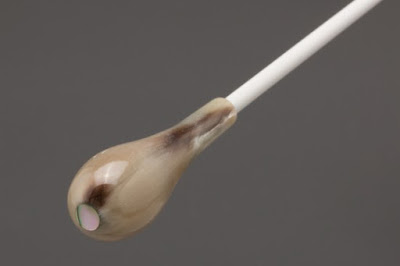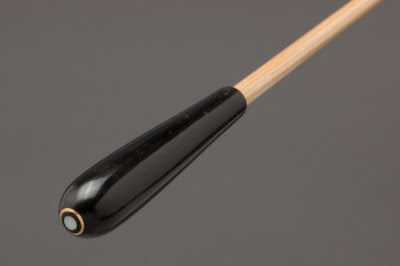How To Select The Best Of Wooden Baton: A Guide
“Music expresses that which cannot be put into words and that which cannot remain silent” - Victor Hugo
Let your emotions flow through your baton while you are conducting a choir. For that, you need the support of the perfect baton. How to acquire it you ask? Ask your instructors for their expert guidance. As a backup, this blog will act as a guide when you are out there selecting the baton that will let the music play. If you are starting your journey as a music conductor, this writeup will help you get a glimpse of what to look out for and what to consider before investing in a Wooden Baton.
Consider these five points before purchasing a conducting baton for yourself because, with the amount of investment it takes, you want to do it right.
1. Consider Your Height - It is almost a rule while selecting a baton that the baton size must be compared to the size of your forearm. But the fact is, it is not always true. It might not always be the perfect match. It is a good start for shortlisting from the n-number of batons you will find with the manufacturer when you set out to find the perfect baton. But always remember, it is not the end word.
2. Scan Your Hand - Scan your hands and see what sort of hand do you have. It the palm large or small? Are the fingers small or long? Accordingly which type of baton will actually fit and look good at the same time in your hand. The process is almost like selecting a spectacle that looks good in your face- all the frames are good looking but you need to try them on to see which fits your requirements best.
3. The Choir And The Environment - The number of performers you are conducting for, their distance from your position, the environment you are conducting in, the color of the walls and the audience. Everything determines the type of baton you should buy. Also, the durability of the material of the baton determines the ultimate selection of batons that you make. All of this makes a difference in the size, color, and material of the baton that you decide to purchase.
4. The Balance - We have all studied in science about the center of gravity and the balancing point of a solid object. It applies very well in the case of batons as well. The balancing point of batons are not always the same- they differ for different heightened batons. If you consider holding a standard twelve-inch baton, you can assume the balance point of the baton is within the 1/4th inch of the handle. So if you are holding your Wooden Baton according to this equation- your movement will be smooth and the music in you will flow.
5. The Case - The baton is protected by the case you keep it in. No matter how good or costly you baton is nothing matters if it does not get the protection it deserves. The case you choose will protect your baton while you are not using it. There are varied options in the case of baton case- the material as well as the design. Many instructors prefer using leather cases when it comes to selecting the material for their hard case.
We know how excited you must be to get your first conducting baton but we would suggest you contain your excitement and consider the above points while selecting your baton to start your musical journey. Basically, go through all of it- the height to weight ratio to the quality of the material that suits you the best. Selecting the perfect baton for conducting can be a tough job but we are always here to help you out.
Let your emotions flow through your baton while you are conducting a choir. For that, you need the support of the perfect baton. How to acquire it you ask? Ask your instructors for their expert guidance. As a backup, this blog will act as a guide when you are out there selecting the baton that will let the music play. If you are starting your journey as a music conductor, this writeup will help you get a glimpse of what to look out for and what to consider before investing in a Wooden Baton.
Consider these five points before purchasing a conducting baton for yourself because, with the amount of investment it takes, you want to do it right.
1. Consider Your Height - It is almost a rule while selecting a baton that the baton size must be compared to the size of your forearm. But the fact is, it is not always true. It might not always be the perfect match. It is a good start for shortlisting from the n-number of batons you will find with the manufacturer when you set out to find the perfect baton. But always remember, it is not the end word.
2. Scan Your Hand - Scan your hands and see what sort of hand do you have. It the palm large or small? Are the fingers small or long? Accordingly which type of baton will actually fit and look good at the same time in your hand. The process is almost like selecting a spectacle that looks good in your face- all the frames are good looking but you need to try them on to see which fits your requirements best.
3. The Choir And The Environment - The number of performers you are conducting for, their distance from your position, the environment you are conducting in, the color of the walls and the audience. Everything determines the type of baton you should buy. Also, the durability of the material of the baton determines the ultimate selection of batons that you make. All of this makes a difference in the size, color, and material of the baton that you decide to purchase.
4. The Balance - We have all studied in science about the center of gravity and the balancing point of a solid object. It applies very well in the case of batons as well. The balancing point of batons are not always the same- they differ for different heightened batons. If you consider holding a standard twelve-inch baton, you can assume the balance point of the baton is within the 1/4th inch of the handle. So if you are holding your Wooden Baton according to this equation- your movement will be smooth and the music in you will flow.
5. The Case - The baton is protected by the case you keep it in. No matter how good or costly you baton is nothing matters if it does not get the protection it deserves. The case you choose will protect your baton while you are not using it. There are varied options in the case of baton case- the material as well as the design. Many instructors prefer using leather cases when it comes to selecting the material for their hard case.
We know how excited you must be to get your first conducting baton but we would suggest you contain your excitement and consider the above points while selecting your baton to start your musical journey. Basically, go through all of it- the height to weight ratio to the quality of the material that suits you the best. Selecting the perfect baton for conducting can be a tough job but we are always here to help you out.




Comments
Post a Comment